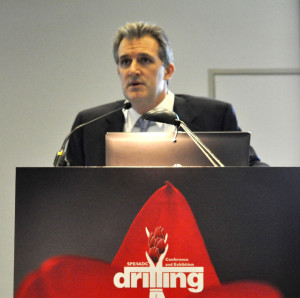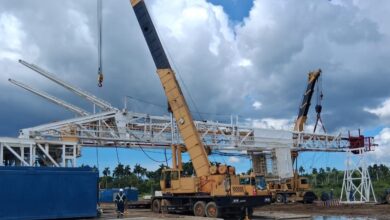ExxonMobil workover operation shuts off gas zones at record depths in Russia

By Katie Mazerov, contributing editor
ExxonMobil Development Co last year completed a challenging workover campaign on Russia’s remote and environmentally sensitive Sakhalin Island, effectively shutting off gas-producing zones and restoring oil production in two extended-reach horizontal offshore wells at depths greater than 9,000 meters (29,500 ft). A case study of the operation, SPE/IADC 163482, was presented by Richard Molloy, ExxonMobil Development Company, on 5 March at the 2013 SPE/IADC Drilling Conference and Exhibition in Amsterdam. “The project incorporated rigorous planning, design and flawless execution by a multifunctional team that continuously focused on safety, operational integrity and attention to the environment,” Mr Molloy said. The operation involved installing straddle liners with swell packers inside the existing lower completions to shut off the gas-producing zones.
With some of the world’s longest-reach wells, Sakhalin Island, off the eastern coast of Russia, presents several operating challenging, including limited access and infrastructure, extreme temperatures reaching as low as -40°F, a short drilling window, seismic activity and difficult road conditions, he explained. The two target wells, Z3 and Z5, have total depths (TD) of 10,675 meters (35,000 ft) and 9,168 meters (30,000 ft), respectively, and are located in 10 to 60 m (32 to 196 ft) of water in the region’s Chayvo development.
After drilling the wells in 2005, the operator began observing increasing gas-oil ratios. Attempts to shut in the wells and cycle production were unsuccessful, so the wells remained shut in for extended periods. The wells initially had been completed in open hole with pre-drill liners, standalone screens across high-permeability and weak zones, inflow control devices and swell packers across multiple zones, Mr Molloy said
Technical challenges
The workover operation, launched in November 2011 and completed in January 2012, incorporated lessons learned from a previous successful workover operation on shallower wells in the region. “However, the greater depths of wells Z3 and Z5 presented additional technical challenges, including the need to precisely place small tubular straddles and mitigate drag risk while conveying the tubulars through tight clearances,” Mr Molloy said.
Before initiating the actual workover, the team had to move a cold-stacked rig with a 180-ft mast and 35-lb substructure from a location 75 km (46 miles) north of the workover site. “The team spent several months dismantling the rig that was moved in 1,400 truckloads over challenging road conditions impacted with deep mud and snow drifts,” he described. “The total rig start-up operation involved more than 350,000 manhours.”
The workover involved many steps that included well-kill operations to displace annular and tubing fluids into the formation without surfacing hydrocarbons. After monitoring well pressures to ensure the wells were dead, the upper completions were pulled, the wells cleaned out and the depths correlated. Preparations were then made to run the lower completion straddle liner packages, which included a 5-in. liner with two 9-meter swell packer assemblies placed above and below the target zones to mitigate depth uncertainty and ensure sufficient contact was made between the packer elements and a short section of blank pipe in the existing lower completion.
The upper completions were run with bottom seal assemblies, production packers, downhole pressure and temperature gauges, deep and shallow gas lift mandrels and surface-controlled safety valves. After testing the tubing and setting the swell packers, waiting for the packers to sufficiently seal, the wells were reconnected to the production manifolds and brought back online.
“We completed the well workover operations ahead of schedule and under budget, with no lost-time and no safety incidents or environmental spills,” Mr Molloy said. “The success of the campaign can be attributed to the team putting significant emphasis on meeting the functional objectives of the project while minimizing operational complexity.”




